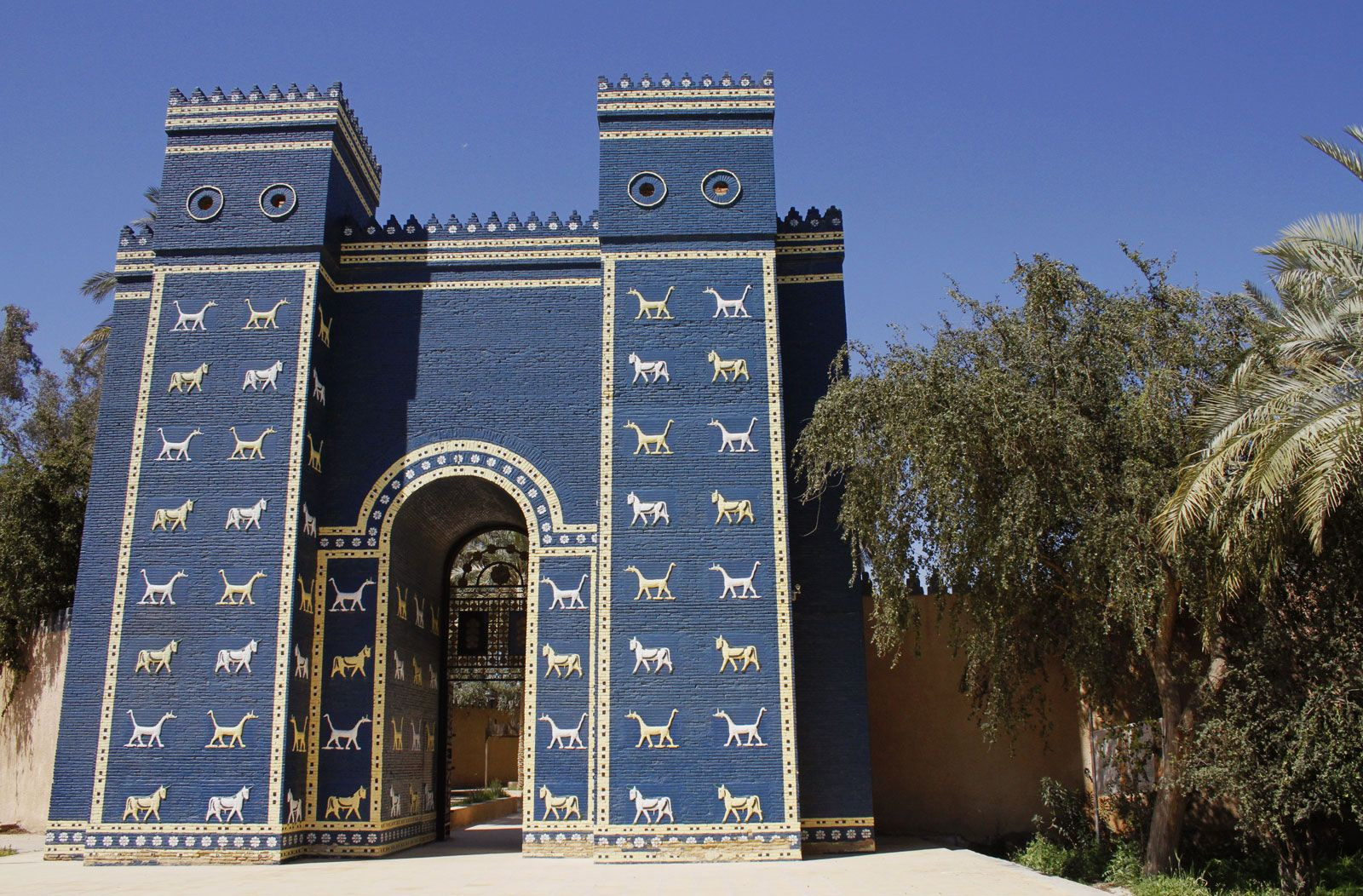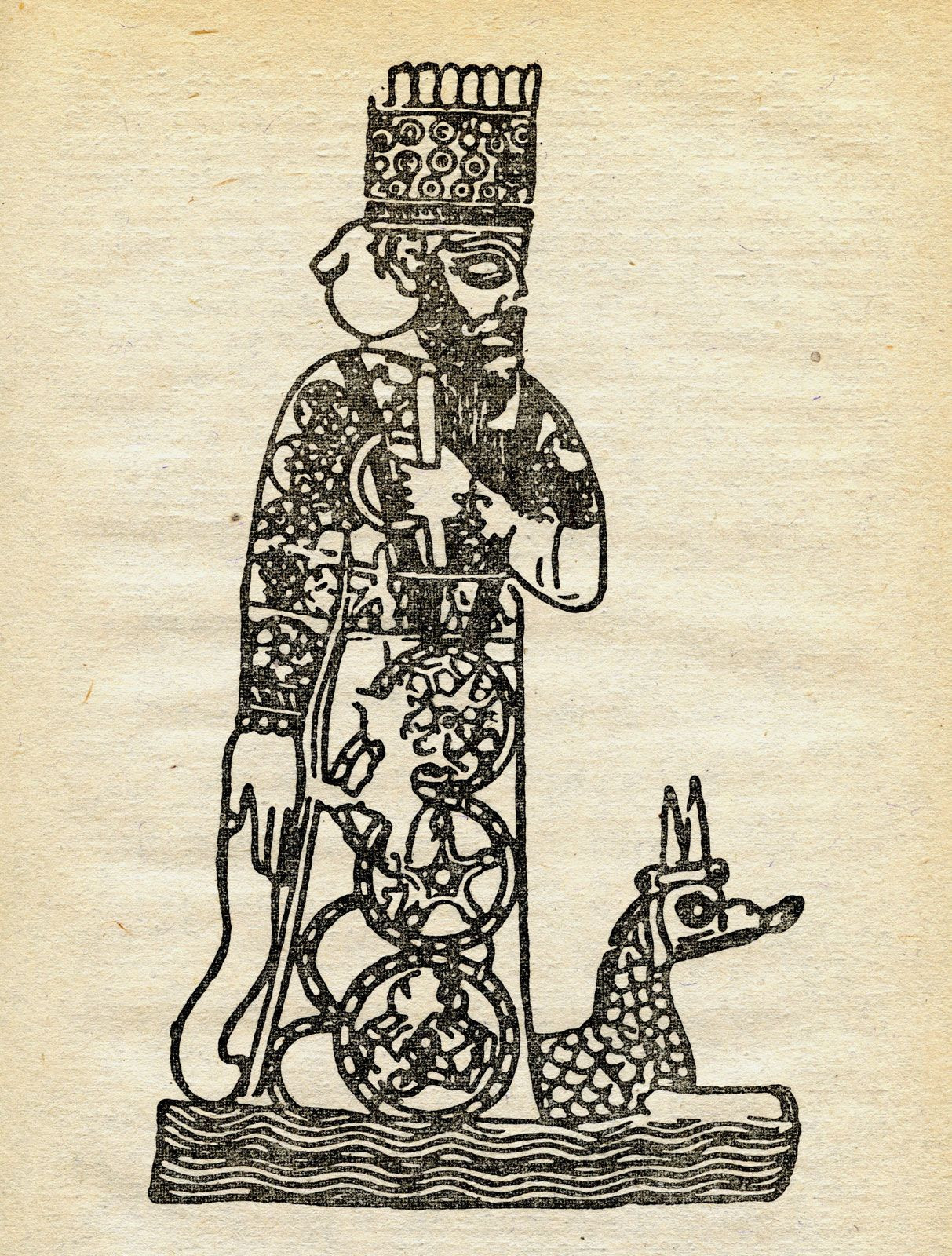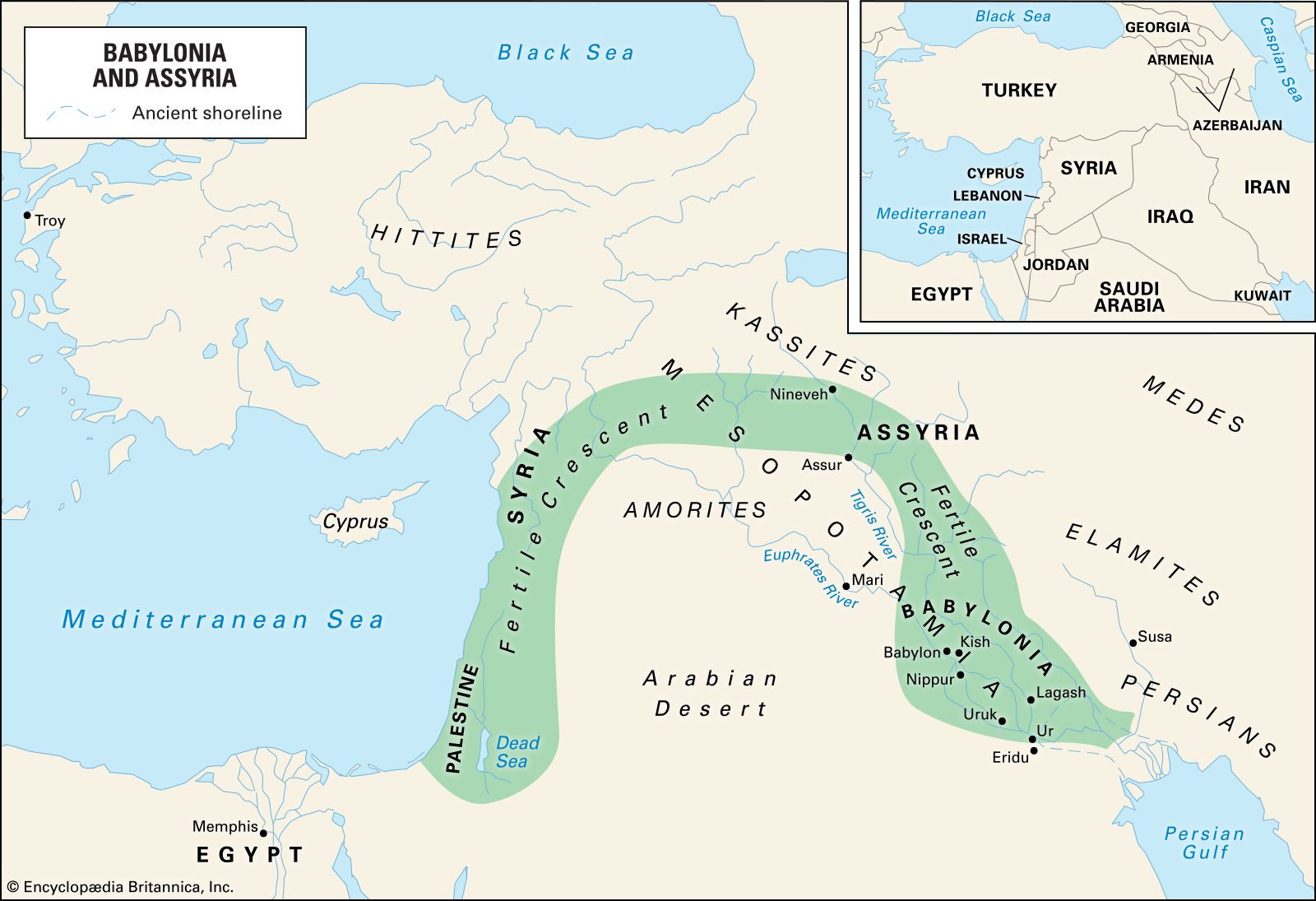Babylon, a name that resonates through the annals of history, evokes images of ancient grandeur, biblical tales, and groundbreaking advancements. But for those seeking to connect with this legendary metropolis, the fundamental question remains: Where Is Babylon located?
 Reconstruction of the Ishtar Gate at the ruins of Babylon, near modern Al-Ḥillah, Iraq
Reconstruction of the Ishtar Gate at the ruins of Babylon, near modern Al-Ḥillah, Iraq
The answer lies in modern-day Iraq. The ruins of this once-magnificent city are situated approximately 55 miles (88 kilometers) south of Baghdad, near the present-day town of Al-Ḥillah. Babylon’s strategic location on the Euphrates River in Mesopotamia, the land between two rivers, was pivotal to its rise as a dominant force in the ancient world. This region, often referred to as the cradle of civilization, provided the fertile ground for agricultural prosperity and facilitated trade routes that connected Babylon to distant lands.
The Ancient City of Babylon: A Historical Overview
Babylon’s story is not one of overnight success but a gradual ascent to prominence over millennia. While evidence suggests prehistoric settlements existed in the area, Babylon’s recognized development as a significant urban center began relatively late in Mesopotamian history, with no recorded mention before the 23rd century BCE.
Following the decline of the Third Dynasty of Ur, under which Babylon was a provincial outpost, the city emerged as the heart of a small kingdom around 1894 BCE. This kingdom was established by the Amorite king Sumuabum, and his successors diligently worked to solidify Babylon’s burgeoning status. The sixth and most celebrated of these Amorite rulers, Hammurabi (1792–1750 BCE), dramatically expanded Babylon’s influence. Hammurabi’s military campaigns led to the conquest of surrounding city-states, transforming Babylon into the capital of a vast kingdom encompassing all of southern Mesopotamia and parts of Assyria. This pivotal moment cemented Babylon’s political importance and, coupled with its advantageous geographical position, propelled it into becoming the primary commercial and administrative hub of Babylonia. Babylon’s burgeoning wealth and prestige, however, also rendered it a coveted prize for ambitious foreign powers.
 Stone carving showing Hammurabi, the king of Babylon, standing before a god
Stone carving showing Hammurabi, the king of Babylon, standing before a god
In 1595 BCE, a Hittite raid marked a transition as control of Babylon shifted to the Kassites around 1570 BCE. The Kassite dynasty reigned for over four centuries, a period during which Babylon solidified its position as a literary and religious center. This era witnessed the ascent of Marduk, Babylon’s patron deity, to the supreme position in the Mesopotamian pantheon, reflecting the city’s growing cultural influence. Despite periods of subjugation, such as under the Assyrian ruler Tukulti-Ninurta I in 1234 BCE, the Kassite dynasty managed to reassert control until 1158 BCE when Elamite invaders sacked the city. The subsequent dynasty of Nebuchadrezzar I (1124–1103 BCE) chose Babylon as its capital, further underscoring the city’s enduring political significance, even though the dynasty itself originated elsewhere.
 Marduk, the chief god of Babylon, c. 1500 BCE
Marduk, the chief god of Babylon, c. 1500 BCE
The centuries that followed witnessed a complex interplay of power struggles. From around 1000 BCE onwards, Aramaean migrations from northern Syria introduced administrative instability within Babylon. A constant contest for political control of the city ensued between Aramaean and Chaldean tribes and the powerful Assyrian empire. Babylon’s citizens, enriched by trade, often found Assyrian rule more palatable due to their capacity to protect international commerce, which was frequently disrupted by tribal conflicts. Assyrian involvement deepened from the 9th to the late 7th century BCE, often exerted through local kings, though direct Assyrian rule was also implemented at times. The increasing incursions of Chaldean tribes and their repeated usurpation of the kingship led to Assyrian intervention under Tiglath-pileser III (744–727 BCE). Eventually, the Assyrian king Sennacherib (704–681 BCE), frustrated by persistent unrest, ordered the complete destruction of Babylon in 689 BCE. However, his successor Esarhaddon (680–669 BCE) reversed this drastic policy, rebuilding the city and allowing exiled Babylonians to return, although the statue of Marduk remained in Assyria for political leverage. In the mid-7th century BCE, civil war erupted within the Assyrian empire, pitting King Ashurbanipal against his brother, who governed Babylonia. Babylon fell to Ashurbanipal in 648 BCE after a devastating siege.
 Map of Babylonia and Assyria, highlighting the Tigris and Euphrates rivers
Map of Babylonia and Assyria, highlighting the Tigris and Euphrates rivers
A resurgence of Babylonian power came under the Chaldean leader Nabopolassar, who in 626 BCE established Babylon as the capital of a new kingdom. This kingdom, under his son Nebuchadnezzar II (605–561 BCE), blossomed into the Neo-Babylonian Empire, a dominant imperial force. Nebuchadnezzar II embarked on a massive reconstruction and fortification program in Babylon, employing laborers from across his vast empire, contributing to the city’s diverse population. Nabonidus (556–539 BCE), Nebuchadnezzar’s successor, faced internal dissent due to his extended absence from Babylon and perceived neglect of the city’s religious traditions. When Cyrus the Great of the Persian Achaemenian dynasty launched an attack in 539 BCE, Babylon succumbed with minimal resistance.
Under Persian rule, Babylon largely maintained its institutions and became the wealthiest satrapy within the vast empire. According to the Greek historian Herodotus, writing in the 5th century BCE, Babylon was the most magnificent city in the world at this time. However, a revolt against Xerxes I in 482 BCE resulted in the destruction of Babylon’s defenses and temples, and the symbolic golden image of Marduk was melted down. In 331 BCE, Babylon surrendered to Alexander the Great, who affirmed its privileges and initiated temple restoration. Alexander recognized Babylon’s commercial significance and intended to make it his imperial capital, but his untimely death in Nebuchadnezzar’s palace in 323 BCE altered this course. Alexander’s conquest ushered Babylon into the Hellenistic world, and Babylonian astronomy significantly enriched Greek science. Following Alexander’s death and the subsequent power struggles among his generals, Babylon fell under the control of the Seleucid dynasty in 312 BCE. The founding of Seleucia on the Tigris as a new capital in 275 BCE marked a decline in Babylon’s importance as a significant portion of its population was relocated to the new city.
Babylon’s Location: Then and Now
Babylon’s geographical coordinates are approximately 32°32′30″N 44°25′15″E. Its location on the Euphrates River was not merely a matter of chance; it was a strategic choice that conferred numerous advantages. The Euphrates provided a vital source of water for irrigation, enabling the fertile agricultural lands that sustained the city’s large population. Furthermore, the river served as a crucial artery for trade and transportation, connecting Babylon to other important centers in Mesopotamia and beyond. The surrounding plains of Mesopotamia offered abundant resources and facilitated agricultural expansion.
Today, Babylon’s ruins stand as a testament to its glorious past. While time and human actions have taken their toll, significant archaeological remains persist, allowing us to glimpse the city’s former splendor. The site is located in the Babil Governorate of Iraq, a region with a rich historical and cultural heritage. Despite periods of instability in the region, efforts have been made to preserve and study the ruins of Babylon. In 2019, UNESCO officially designated Babylon as a World Heritage Site, recognizing its universal value and importance for future generations. This designation aims to bolster conservation efforts and promote responsible tourism to the site.
Key Landmarks and Archaeological Significance
Babylon was renowned for its monumental architecture and artistic achievements. Among its most famous landmarks, the Ishtar Gate stands as an iconic symbol of Babylonian artistry. This massive gate, adorned with vibrant glazed bricks depicting lions, dragons, and bulls, served as a ceremonial entrance to the city. Reconstructed in the Pergamon Museum in Berlin, the Ishtar Gate offers a breathtaking visualization of Babylon’s architectural grandeur. Another legendary structure associated with Babylon is the Hanging Gardens, one of the Seven Wonders of the Ancient World. While archaeological evidence for the Hanging Gardens within Babylon remains debated, ancient accounts describe an extraordinary feat of engineering and landscaping. The Temple of Marduk, known as Esagila, was the central religious structure of Babylon, dedicated to the city’s patron deity. It was a massive complex that housed the principal shrine of Marduk and played a crucial role in Babylonian religious life. Babylon is also inextricably linked with the Code of Hammurabi, one of the earliest and most complete written legal codes. Inscribed on stelae, this code provides invaluable insights into Babylonian society, law, and governance.
Conclusion
Babylon, the illustrious city of antiquity, is geographically situated in present-day Iraq, south of Baghdad near Al-Hillah. Its location on the Euphrates River in Mesopotamia was fundamental to its historical trajectory, fostering its growth as a major political, economic, and cultural center. From the reign of Hammurabi to the Neo-Babylonian Empire under Nebuchadnezzar II, Babylon left an indelible mark on human civilization. Today, the ruins of Babylon serve as a powerful reminder of the city’s enduring legacy, inviting us to explore and appreciate the cradle of civilization in its historical and geographical context. Its recognition as a UNESCO World Heritage Site underscores its global significance and the ongoing efforts to preserve this invaluable window into our past for generations to come.
